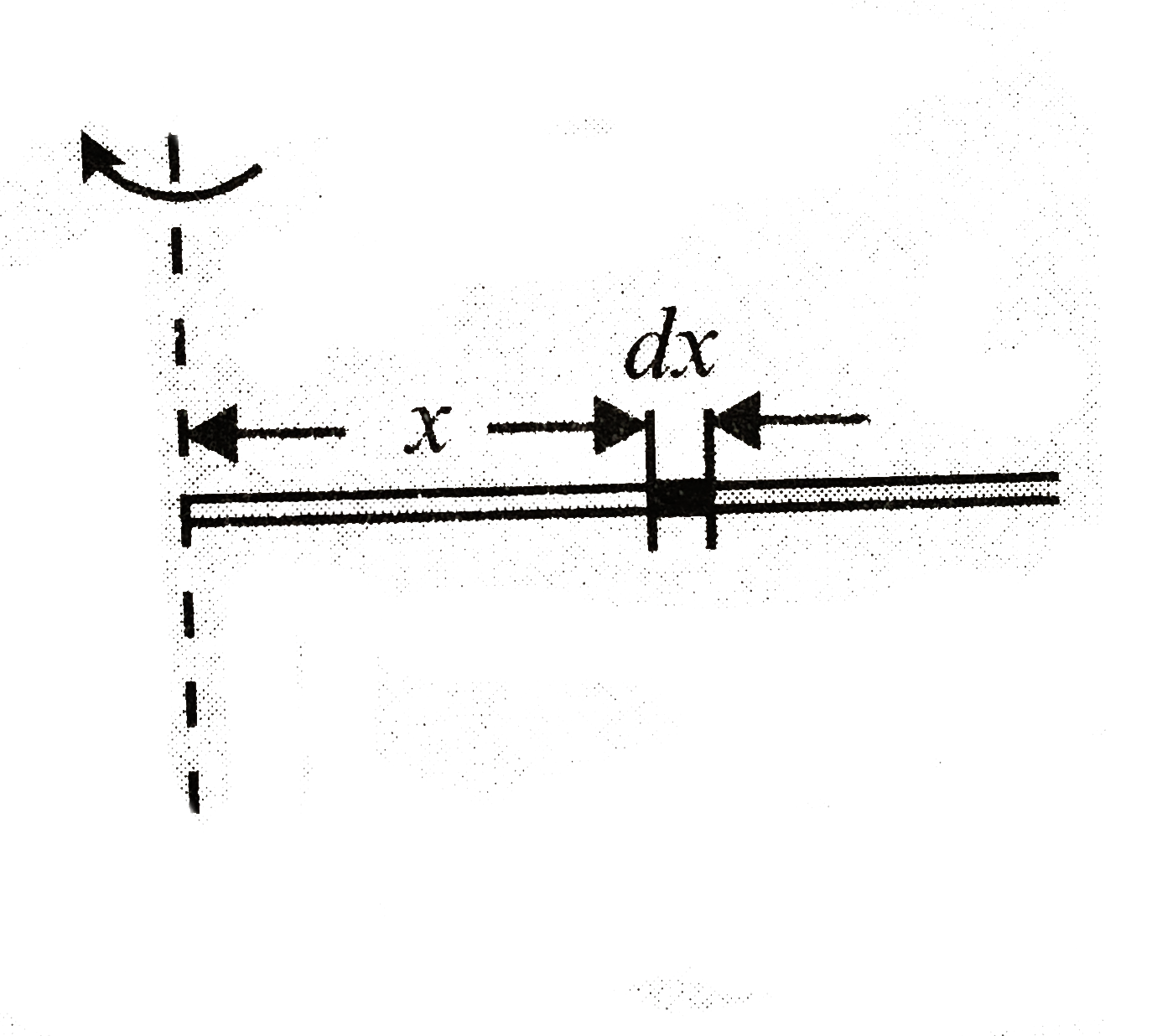Moment of inertia of a uniform rod of length L and mass M, about an axis passing through L/4 from one end and perpendicular to its length is
736ML2
748ML2
1148ML2
ML212
The correct Answer is:B
To find the moment of inertia of a uniform rod of length L and mass M about an axis passing through L4 from one end and perpendicular to its length, we can follow these steps:
Step 1: Identify the Moment of Inertia about the Center of Mass
The moment of inertia ICM of a uniform rod about an axis passing through its center of mass and perpendicular to its length is given by the formula:
ICM=112ML2
Step 2: Determine the Distance from the Center of Mass to the New Axis
The center of mass of the rod is located at L2 from one end. The new axis is located at L4 from the same end. The distance x between the center of mass and the new axis is:
x=L2−L4=L4
Step 3: Apply the Parallel Axis Theorem
According to the parallel axis theorem, the moment of inertia I about the new axis can be calculated using:
I=ICM+Md2
where d is the distance from the center of mass to the new axis. Substituting the values we have:
I=112ML2+M(L4)2
Step 4: Calculate Md2
Now, calculate Md2:
Md2=M(L4)2=M⋅L216=ML216
Step 5: Combine the Results
Now combine the results from Step 3 and Step 4:
I=112ML2+ML216
Step 6: Find a Common Denominator
To add these fractions, we need a common denominator. The least common multiple of 12 and 16 is 48. Therefore:
I=4ML248+3ML248=7ML248
Final Result
Thus, the moment of inertia of the uniform rod about the given axis is:
I=7ML248
The moment of inertia ICM of a uniform rod about an axis passing through its center of mass and perpendicular to its length is given by the formula:
ICM=112ML2
The center of mass of the rod is located at L2 from one end. The new axis is located at L4 from the same end. The distance x between the center of mass and the new axis is:
x=L2−L4=L4
According to the parallel axis theorem, the moment of inertia I about the new axis can be calculated using:
I=ICM+Md2
where d is the distance from the center of mass to the new axis. Substituting the values we have:
I=112ML2+M(L4)2
Now, calculate Md2:
Md2=M(L4)2=M⋅L216=ML216
Now combine the results from Step 3 and Step 4:
I=112ML2+ML216
To add these fractions, we need a common denominator. The least common multiple of 12 and 16 is 48. Therefore:
I=4ML248+3ML248=7ML248
Thus, the moment of inertia of the uniform rod about the given axis is:
I=7ML248
Topper's Solved these Questions
- ROTATIONAL MECHANICSBOOK - DC PANDEYCHAPTER - ROTATIONAL MECHANICSEXERCISE - Level 1 Subjective
32 Videos
- ROTATIONAL MECHANICSBOOK - DC PANDEYCHAPTER - ROTATIONAL MECHANICSEXERCISE - Level 2 Single Correct
26 Videos
- ROTATIONAL MECHANICSBOOK - DC PANDEYCHAPTER - ROTATIONAL MECHANICSEXERCISE - Assertion And Reason
11 Videos
- ROTATIONBOOK - DC PANDEYCHAPTER - ROTATIONEXERCISE - (C) Chapter Exercises
39 Videos
- ROTATIONAL MOTIONBOOK - DC PANDEYCHAPTER - ROTATIONAL MOTIONEXERCISE - Integer Type Questions
17 Videos
Similar Questions
Calculate the moment of inertia of a uniform rod of mass M and length l about an axis passing through an end and perpendicular to the rod. The rod can be divided into a number of mass elements along the length of the rod.

View SolutionThe radius of gyration of a uniform rod of length l about an axis passing through one of its ends and perpendicular to its length is
View Solution
Knowledge Check
Moment of inertia of a uniform rod of length L and mass M , about an axis pasing through L/4 from one end and perpendicular to its length is
A736ML2B748ML2C1148ML2DML212The moment of inertia of a thin uniform rod of mass M and length L about an axis passing through its mid-point and perpendicular to its length isI0. Its moment of inertia about an axis passing through one of its ends perpendicular to its length is.
AI0+ML2/4BI0+2ML2CI0+ML2DI0+ML2/2The moment of inertia of a thin uniform rod of mass M and length L about an axis passing through its midpoint and perpendicular to its length is I0 . Its moment of inertia about an axis passing through one of its ends and perpendicular to its length is
AI0+ML2/2BI0+ML2/4CI0+2ML2DI0+ML2
Moment of inertia of a thin rod of mass m and length l about an axis passing through a point l/4 from one end and perpendicular to the rod is
View SolutionThe moment of inertia of thin rod of linear density λ and length l about an axis passing through one end and perpendicular to its length is
View SolutionThe radius of gyration of an uniform rod of length L about an axis passing through its centre of mass and perpendicular to its length is.
View SolutionThe moment of inertia of a uniform thin rod of length L and mass M about an axis passing through a point at a distance of L3 from one of its ends and perpendicular to the rod is
View SolutionThe moment of inertia of a uniform thin rod of length L and mass M about an axis passing through a point at a distance of L/3 from one of its ends and perpendicular to the rod is
View Solution
